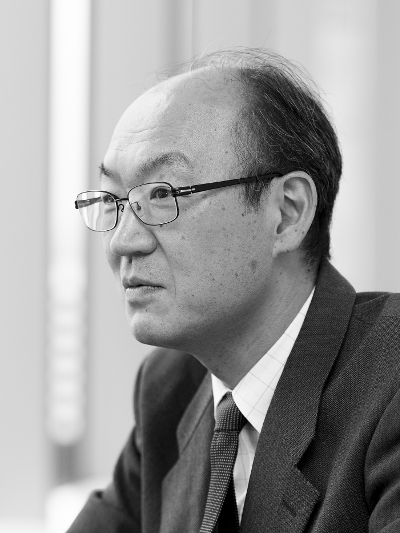Morphological Filter Revisited
Wednesday, 4 September 2019, 14:10 – 15:10 at High-Rise Wing 5F, Room 515
Prof. Makoto Nakashizuka (Chiba Institute of Technology )

Abstract Mathematical Morphology provides a set theoretic image and signal processing methods. Morphological filters consist of the basic building blocks: dilation, erosion, opening and closing. Based on these building blocks, the theory and applications have been studied since the early 70s. The morphological filters are well known classical image processing technique and are included in many programing libraries. For gray level images, the gray scale morphological filters are implemented by minimum and maximum functions. The minimum and maximum functions, which are not differentiable, prevent the utilization of the standard gradient based techniques to optimize the morphological-based system. The optimization of the morphological filters has been considered as a difficult problem due to its non-differentiability. However, this situation changed drastically in recent years. In the fields of the signal processing, the non-differentiable optimization techniques have been utilized for the important and popular applications. Non-differentiable convex optimization techniques that include the augmented Lagrangian method have been successfully applied to the image recovery problems. Many adaptive subgradient methods have been developed for training of deep neural networks that include non-differentiable activation functions. By using these non-differentiable optimization techniques, new fields of the morphological filters will be opened for image processing. In this talk, image regularization with morphological features and deep morphological filter networks are presented. In the both applications, we show the recent developed optimization techniques can lead the novel applications of the morphological filters.
Biography Prof. Makoto Nakashizuka received the Ph. D. degree in electrical engineering from Niigata University, Niigata, Japan, in 1993. He was a Research Associate in the Department of Information Engineering, Niigata University, from 1993 to 1997. He went on to become an Associate Professor at the Graduate School of Bio-Applications and Systems Engineering, Tokyo University of Agriculture and Technology, from 1997 to 2004 and an Associate Professor at the Graduate School of Engineering Science, Osaka University, from 2004 to 2012. Since 2012, he has been a Professor at Chiba Institute of Technology. His research interests include signal modeling and its applications in signal and image processing. He served as the Chair of IEICE Technical Committee on Signal Processing (SIP), the general Chair of 2015 International Workshop on Smart Info Media System in Asia (SISA2015), the Editor in Chief of Special Section, IEICE Transactions (2015-2016), etc. Prof. Nakashizuka is a member of the Institute of Electrical and Electronics Engineers the Institute of Electronics (IEEE) and the Information and Communication Engineers (IEICE) of Japan.
Recent Advances of Information Retrieval by Data Embedding Technique to Printed Images Using Mobile Devices
Thursday, 5 September 2019, 9:30 – 10:30 at High-Rise Wing 5F, Room 515
Prof. Mitsuji Muneyasu (Kansai University)

Abstract There are many two-dimensional codes, such as QR codes, Data Matrix, PDF417, and others. The codes have often been used for retrieving information such as URLs from printed matter, including magazines or advertisements by using a smartphone. Mainly, the QR code has often been used in such cases. However, since two-dimensional codes have the appearance of a random pattern, their use spoils the appearance of printed matter. Therefore, the embedding technique of information in printed images for data retrieval has been proposed and has attracted attention. There are several methods for implementing the technique, and the technique based on digital watermarking has also been proposed. In this talk, an overview of such a technique is presented, including its application, its current situation of commercial services, technological issues, and several proposed methods.
Biography Prof. Mitsuji Muneyasu received the B.E. and M.E. degrees in system engineering from Kobe University, in 1982 and 1984, respectively and Doctor of Engineering degree from Hiroshima University, Japan in 1993. In 1984, he joined Oki Electric Industry Co., Ltd., in Tokyo, Japan. From 1990 to1991, he was a Research Assistant at the Faculty of Engineering, Tottori University, Tottori, Japan. From 1991 to 2001, he was a Research Assistant and Associate Professor at the Faculty of Engineering, Hiroshima University, Higashi-Hiroshima, Japan. Since 2001 he joined the Faculty of Engineering, Kansai University, Osaka, Japan, where he is currently a Professor. His research interests include image processing, acoustic signal processing and nonlinear digital signal processing. He is a fellow of IEICE, and a member of IEEE and IPSJ.